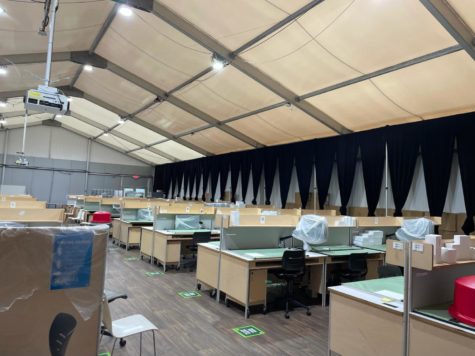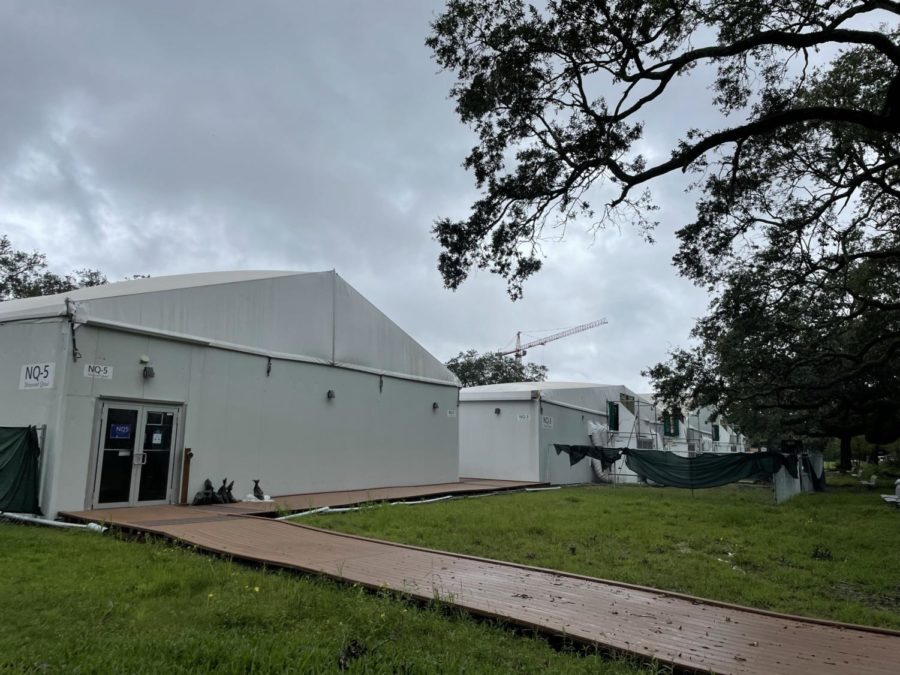OPINION | Richardson Memorial renovations place development over student well-being

After navigating a campus-wide mask mandate effective in indoor and outdoor facilities, social distancing protocols and temporary classrooms obstructing various quads, Tulane University’s return to somewhat normalcy was exciting. However, students in the School of Architecture were not afforded this pleasure as the university undertook the renovation of Richardson Memorial Hall.
As COVID-19 is still an imminent threat to the New Orleans community and the state of Louisiana faces the devastating repercussions of Hurricane Ida, there are already significant construction projects taking place on Tulane’s campus. The university’s resources should be spent on more pressing issues within the community.
Given Tulane removed other temporary classrooms as COVID-19 restrictions were lifted on campus, the presence of five dingy pavilions on Newcomb Quad seems misplaced. These unconventional classrooms that Tulane students have become familiar with, however, are not set up to accommodate COVID-19 policies but are rather being used to house Tulane’s displaced architecture students.
Richardson Memorial Hall, known for being located on the “oldest and most beautiful quadrangle at Tulane” is home to the architecture program, its students and its staff. Renovations scheduled for fall of 2021 could last up to two years, which begs the question, is now the best time to start such significant construction?
Currently, Richardson Memorial Hall is a five-story facility complete with libraries, computer labs, fabrication labs and shop classrooms. The historic building, designed in 1907, is 50,000 square feet and has been a home away from home for Tulane architecture students since 1968. The sheer amount of time and commitment required to complete the architecture major at Tulane leads many students to spending countless hours working in the studio, taking breaks in the Drawing Board Cafe and utilizing the building’s amenities to work most efficiently. Not only is the addition of temporary buildings dangerous in a city threatened by COVID-19 but for architecture students, the amenities that are put in place to help them succeed academically have now been taken away.
Tropolin-Peer, a Louisiana based architecture firm, will complete the renovations. According to their website, they hope to modernize the historic building’s interior as well as add offices and seminar classrooms.
In light of this recent construction project, architecture students and professors are now limited to only five pavilions covering Newcomb Quad. Not only is the obstruction of the quad depressing, but the confinement of approximately 300 architecture students into facilities with significantly less capacity than Richardson Memorial Hall shows complete disregard for students’ COVID-19 safety. As only 43% of Louisianians are vaccinated and cases in New Orleans alone average 84 per day, the renovation of Richardson Memorial Hall is neither smart nor convenient during such unpredictable times.

Why was this project not postponed? Richardson Memorial Hall is safe, accommodating and satisfactory for learning. This renovation forces students to study in close quarters for a majority of their classes, therefore increasing the risk of COVID-19 infection. Though this may be an important renovation for Tulane’s growing student body, evidently now is not the time.
While a significant majority of students and staff are vaccinated, COVID-19 still poses a threat to campus life. According to the Centers for Disease Control and Prevention, it is still possible for vaccinated individuals to catch and spread COVID-19. Tulane has a high student and faculty vaccination rate, but fewer than 50% of Louisiana residents are vaccinated.
The renovation of Richardson Memorial Hall is an exciting project. However, now is not the time to “modernize” buildings when the threat of another COVID-19 outbreak looms over the New Orleans community. The project forces architecture students to study in a cluster of temporary classrooms with significantly less space than that of the former architecture building, risking both their education and health.
Your donation will support the student journalists of Tulane University. Your contribution will allow us to purchase equipment and cover our annual website hosting costs.



